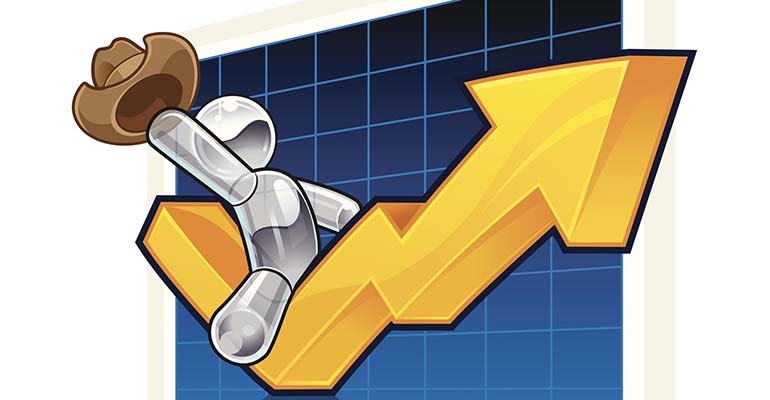November 13, 2020

I better begin this week with some housekeeping: I wrote last week about the value of stockmanship and forgot to include a link for those who may be interested in learning more. Eunice Williams has some excellent materials available on the Bud Williams Stockmanship and Livestock Marketing website. I really feel a live school is the best, but with COVID-19 restrictions being reinstated this is probably the best way to go.
Last week I was expecting to see some kind of swing in the market and it finally happened this week. I wasn’t sure if it would go lower or higher but we now know it went higher. I was surprised at how quiet the grain guys were this week. I was also surprised how upset the cattle people were. The great expectation was with the election being claimed by Biden, the cowboys expected the market to drop. I heard all kinds of opinions on why it rallied, and they all differed from mine. The thing is, none of these opinions matter. What matters is the price relationships between feed, money and livestock, and the value we can capture with these things.
Whomever sits in the president’s office does not affect our ability to be profitable, although I do agree that person can create some unwelcome challenges. It is our management decisions that affect our profitability, the law of cause and effect.
About those decisions
Along those lines, Dallas Mount of Ranch Management Consultants wrote a good blog this week about winter-feeding cows. Also this week a group that was created to promote agriculture tweeted a random fact that the average cow will consume six to nine round bales to make it through the winter.
I buy and sell hay, so I have an idea what the hay market is. I also buy feeder cattle, so I understand the value relationship between feed and cattle. When I read that tweet about cows consuming that much hay I immediately knew that the value of that much hay consumes most of the value of an unweaned five-weight in Nebraska right now. It is impossible to cheapen up the rest of the cow’s carrying cost enough to make this profitable. Feeding that much hay to an animal that depreciates shows a lack of understanding of the relationship between feed and livestock.
Another thing I feel worth mentioning this week is the volume of phone calls I got on Monday from people who lost their jobs. These were all people who are involved in animal agriculture in publishing, advertising, education, pharmaceutical and accounting. They were all pretty upbeat and taking it well, much to my surprise. A couple days later it hit me, all these people have a sideline hustle. It may not be enough to live off of but it’s better than nothing.
This got me thinking back to when I was young and told to get a degree so I could land a secure job with excellent benefits and a decent salary. Cattle were to be something that I would do on evenings and weekends, because as these experts told me some years you make money on cattle and some years you don’t. I find it ironic and greatly satisfying that some of these people had cattle to fall back on, after the first three-quarters of my life I was told it wasn’t possible.
Now here’s the thing, these people are serious about making money on the cattle, and they’ve managed and structured their operation to do just that. They prepared to win. When we think we need credentials and secure jobs outside of cattle we are planning to lose. Think about it, how successful can you be with one foot already out the door. I am really interested to see if my friends will now expand their cattle operations since they now have some more time. They’re kinda in it with both feet now.
This is the very reason some people teach marketing, stockmanship and business schools. It’s the reason others wrote books. We have spent so much of our lives being institutionalized to get a secure job that can’t survive the after effects of something like this COVID shutdown. Why not spend some time learning how to succeed in your own business? Your past employer may let you down but I’m willing to bet that you won’t let yourself down.
The cattle biz can be great if we go about it in the right way.
Prices boost this week
This week all weights and classes of cattle got a boost in price. While this may sound great on the surface it changed relationships between weights and feed. The value of gain (VOG) changed, and in a big way in some spots along the spectrum. Last week we could execute profitable trades throughout the spectrum and this week we can’t. The VOG was like a yo-yo. Some weights saw a VOG that will allow for profitable trades while others didn’t. Some weights brought less dollars per head than the weight class right below it, setting the stage for two things.
One is by putting that weight on we are giving away feed and time, or even paying the market to take it.
The other option is to do a leap-frog trade, where we can sell a lighter animal and buy back a heavier one and the market pays us to take the weight home.
A big part of this fluctuation between weights is being caused by buyers zeroing in on certain weights. A little over a month ago I wrote that some buyers were not buying cattle because they were waiting for the market to go down, and I said to just jump in and buy those bawling calves. This is why, now that other people have jumped in the market, we can bring back our hard-weaned cattle and sell them as overvalued, provided we have the right weight class in our inventory. Plus the bawlers were greatly undervalued at the time we should’ve bought them. This is a 45-day turnover providing great positive cash flow.
The heifers still saw a great rollback again this week. Even though their VOG was also a bit like a yo-yo it wasn’t as erratic as the steers.
The one thing that remained constant was the relationship between fats and feeders. To replace fats at a profit is still a hunt-and-peck circumstance.
This week unweaned cattle were $4-15 back, and the heavier they are the bigger the discount. Feeder bulls were $15-25 back; again the bigger the bull the bigger the discount. Southern markets were greatly undervalued this week.
It was hard to make heads or tails of the female markets. One sale they were just over the scale and the next they brought some high prices. This makes it hard for me to trend for an appreciation/depreciation curve. It’s more of a right-place-right-time thing this week. However, one thing that caught my attention was the large volume of cull cows that came to town.
The opinions of the author are not necessarily those of Beef Producer or Farm Progress.
About the Author(s)
You May Also Like






